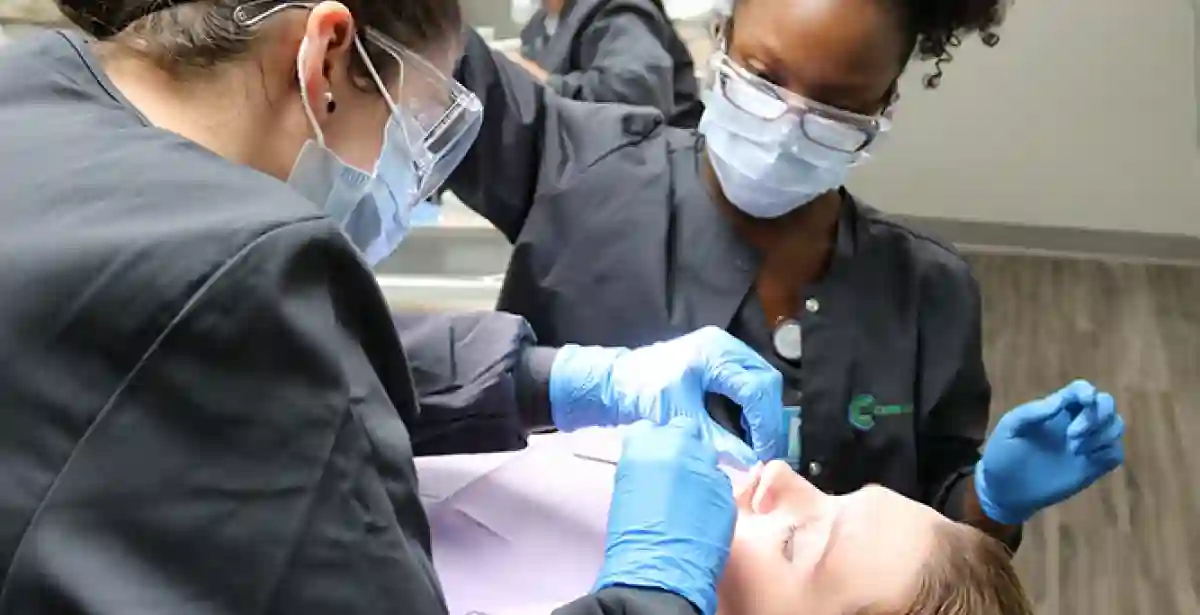
Study Options for Dental Assistants
- Education
- November 24, 2022
- No Comment
- 1153
Chair-side assisting is the practice of collaborating with a dentist while assisting with patient care. After learning about the many dental assistant study options and finishing an educational program, students can enter the field of work, which is officially known as dental assisting. Although there are no formal educational requirements to become a dental assistant, having a degree will help you get a job and understand all of your responsibilities.
Students learn how to assist in clinical and administrative tasks through a typical curriculum. The completion of vocational school can result in the awarding of a certificate, diploma, or associate’s degree. By employing the tools of the trade to carry out clinical operations, education teaches students how to offer patient care.
The quickest route to a degree is to complete a certificate program. In less than a year, students can anticipate finishing their programs. Both classroom and laboratory requirements are covered within the curriculum. Courses that students might enroll in include.
By helping the certified dentist deliver effective dental care, how to become a dental assistant? serve as his or her extra hand. They also assist and lessen the dentist’s treatment workload, allowing the dentist to work more effectively.
Working Conditions
The following are some of the various patient care, office, and laboratory tasks that dentist assistants perform.
- They prepare and arrange the devices and treatment materials needed to treat each patient. They sterilize and disinfect tools and equipment.
- They produce casts from the impressions, build temporary crowns, and clean and polish the dentist’s removable instruments.
- Chair-side assisting practices in dental science offices
- Through classes like these and others, one can learn how to clean instruments and set up a space for a certain dental treatment. Students receive instruction in administrative tasks, including how to update medical records, make payments on bills, and place supply orders. Students receive the necessary information through education to become licensed.
A larger range of knowledge is taught to students in one-year diploma programs. The practices and various tools utilized in an office are explored. By doing dental treatments in the classroom, students develop traditional skills. Courses in general science and dental assisting are included in the curriculum. Subjects could include:
Dental Office Administration
Understanding the materials required to take impressions and produce dental x-rays is one of the skills acquired. Students are equipped to manage a variety of clinical tasks, such as giving gum anesthetics and taking out stitches. Students who take care instruction learn how to make patients feel at ease. Students are taught in courses how to explain dental procedures and proper oral hygiene to patients. The work completed enables pupils to enter the workforce prepared.
An associate’s degree program is the most comprehensive educational choice that provides students with the best preparation for a career as a dental assistant. All aiding techniques as well as administrative duties are taught to students. Due to the two-year length of the program, students have more time to master the necessary skills and build a strong foundation in the dental industry. Among the courses taken are:
Dental Radiology Laboratory Methods
More states are enabling assistants to do more clinical tasks as the field expands. Students pursuing an associate’s degree learn the most recent dental technology while preparing for greater responsibility in the profession. Coronal polishing and restorative dental operations are among the expanded tasks. Additionally, students receive instruction in applying dental dams and removing excess dental cement from teeth. Different states have different licensing requirements, so it is the student’s obligation to take the appropriate certification examinations.
Future Positions for Assistants
The assistant can operate in a dental office or facility alone, alongside a single dentist, or as part of a team of dental professionals that have partnered with other dentists and dental businesses. A salesperson for dental products who visits patients, dentists, and other businesses may also be an assistant. Additionally, they could end up teaching dental assisting classes at various institutions or universities. They might manage the hospital’s dental services and care for patients who have been admitted. They might also work for extremely specialized dental offices, such as those that focus on periodontics, orthodontics, or pediatric dentistry. Additionally, they could serve as agents for insurance firms. Additionally, they could work in hospitals, school clinics, and dental clinics. Additionally, they could assist in educating public school pupils about preventive dental care.
Earnings
Depending on their qualifications, state of residence, employer, and the company they work for, an assistant may make a good living. According to statistics, the typical hourly rate for aiding in the United States was $15.98, translating to a median annual estimate of $33,230.00. This indicates an increase in assistants’ pay compared to the $14.62 median hourly wage in . Some assistants receive advantages such as dental insurance in addition to their monetary pay. This may have had a role in the rise in the number of persons enrolling in dental assistant programs around the nation.
